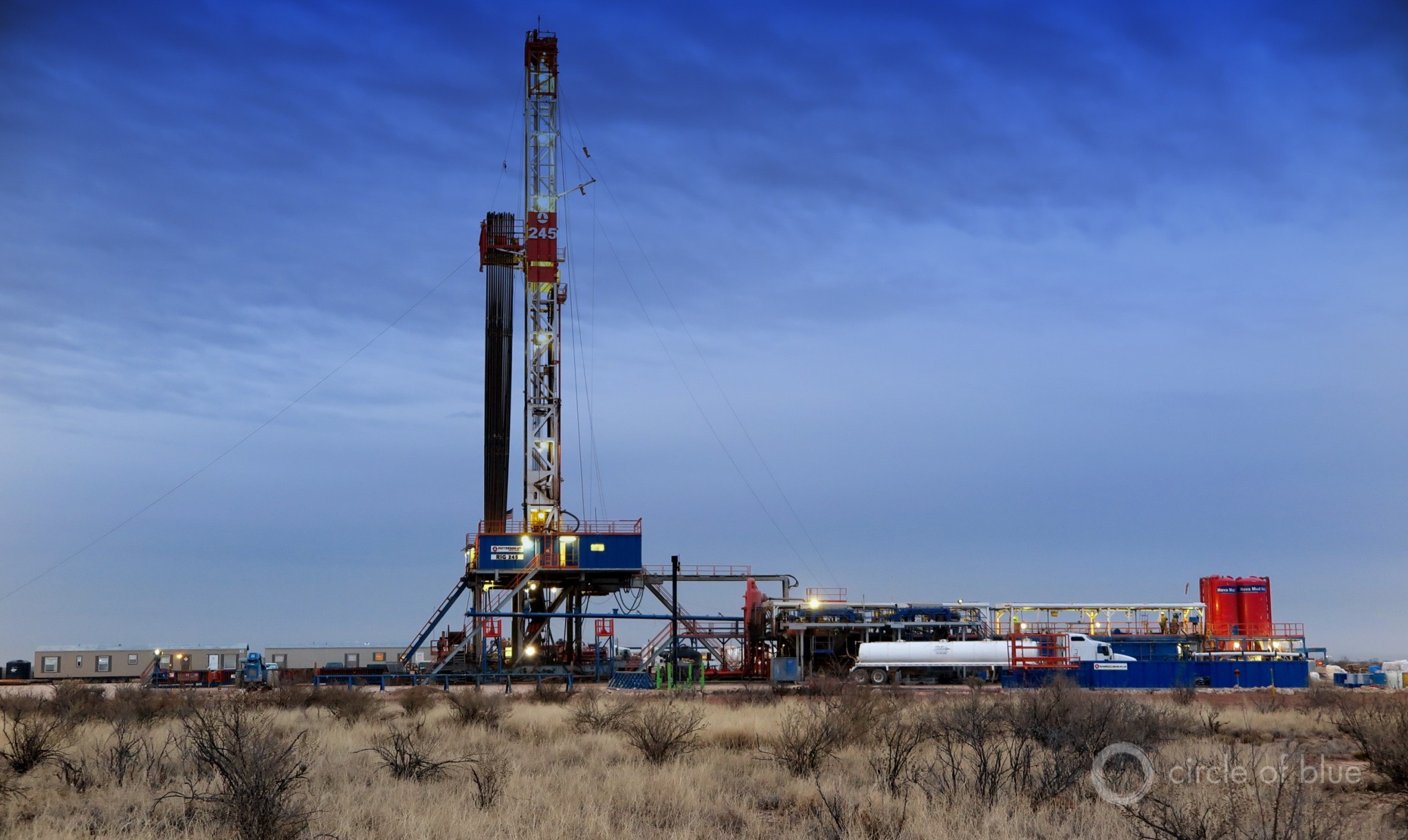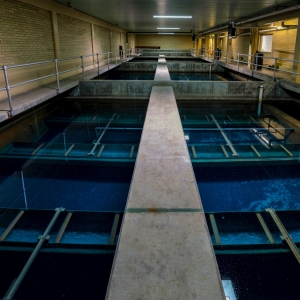The Stream, September 27, 2023: Rise in Fracking Mega-Projects Worsens U.S. Groundwater Crisis

A drilling rig explores for oil in southeast New Mexico’s Permian Basin, one of the most productive sources of shale oil in the U.S. Photo © Keith Schneider / Circle of Blue
YOUR GLOBAL RUNDOWN
- Ending a nearly two decade-long fight, a Filipino court has ruled in favor of an Indigenous community to block mining on its homelands in northern Palawan.
- A rise in ‘monster’ fracking in the United States depletes millions of gallons of water from drying aquifers.
- This winter’s Antarctic sea ice coverage has shattered its previous record low, a result of global warming.
- Mounting global research on 6PPD, a chemical found in road tires, suggests it is a particularly toxic and increasingly widespread water contaminant.
A dry, hot Midwestern summer is causing saltwater intrusion in the Mississippi River, threatening drinking water for New Orleans and other delta communities.
“We don’t experience this all that often, at least not up this far of the river.” — Gov. John Bel Edwards of Louisiana.
A summer of low rainfall in the Midwest, combined with extreme heat, has dropped water levels in the Mississippi River, the New York Times reports. As a result the river is “less resistant to a mass of saltwater flowing north from the Gulf of Mexico.” As it moves upstream, the “saltwater wedge” threatens the drinking water supply for New Orleans and other communities that have intakes in the river.
Officials are working to slow the wedge, which would also corrode water infrastructure and pipes in the region. In July, the U.S. Army Corps of Engineers built an underwater sill to block the saltwater flow, and will be working to raise the barrier in the coming days. Because it is more dense than the river’s fresh water, salt water moves along the river bottom.
Close to 15 million gallons of water will be delivered via barges to water treatment centers, though “the demand at treatment facilities could ultimately rise to at least 36 million gallons per day.”
— Christian Thorsberg, Interim Stream Editor
Recent WaterNews from Circle of Blue
- In Minnesota, Families Blame Farm Nutrient Contamination On Heavy Cancer Toll — Four families, 12 cancer cases, 7 deaths.
- Water Migrants: Reaching European Shores — Pakistani citizens were rescued from a migrant boat a year after cascading floodwaters submerged a third of Pakistan.
The Lead
Since 2011, fracking projects have used 1.5 trillion gallons of water — equivalent to the volume of tap water the state of Texas consumes in one year, the New York Times reports.
And oil and gas projects that consume large quantities of water are on the rise. “Monster” fracking projects, defined as those that use more than 16.8 million gallons of water, today “account for almost two out of every three fracking wells in Texas.”
The result is an energy sector drilling not only oil and gas wells, but in search of aquifers that can sustain their fossil fuel projects.
According to the Times, many of these tapped water wells occur in regions with drinking water instability. According to a 2016 study, “nearly 60 percent of the 110,000 wells fracked between 2011 and 2016 were in regions with high or extremely high water stress, including basins in Texas, Colorado, Oklahoma, and California.”
In context: America’s Oil Boom Can Not Happen Without Groundwater
This Week’s Top Water Stories, Told In Numbers
6.55 million
Square miles of sea ice measured in the Antarctic at its peak this winter, Reuters reports. It’s the lowest seasonal maximum since satellite record-keeping began in 1979. Scientists say that the loss of sea ice is a direct result of global warming, the consequences of which could be dire for animals such as penguins, while heavily impacting global sea currents and weather patterns.
297,656
Number of acres comprising the Mantalingahan range — a protected area, proposed UNESCO heritage site, and Indigenous homeland for multiple communities in the northern Philippines. Since 2005, these residents have been fighting against nickel mining, which they say would pollute the region and threaten its forests, Mongabay reports. In the intervening years, the nickel mining firms operated and cut down trees — more than 311,000 acres — but were issued a writ last month by the Philippines Supreme Court, “an initial step in a legal process activists say they hope will result in the permanent suspension of the nickel mine.”
On the Radar
A growing body of research from around the world points to 6PPD — a chemical commonly found in road tires — as being a major contaminant in waterways, Yale Environment 360 reports. The chemical was identified as increasing salmon mortality in western American streams, from California to Alaska, and has been found in urine samples in women and children in south China. By one estimate, “78 percent of ocean microplastics are synthetic tire rubber,” Yale reports. Calls are escalating to regulate tire manufacturing, while no extensive testing on 6PPD’s impact on humans has yet been conducted.
More Water News
Austria’s Glaciers: As Austria’s mighty Jamtalferner glacier melts, scientists worry that all of the country’s glaciers will disappear within the next few decades, AP reports.
Plastic Cup Competition: A 10-day competition in Hungary’s Tisza River sees more than 150 people compete to clear as much pollution as possible from its waters, AP reports.
Christian Thorsberg is an environmental writer from Chicago. He is passionate about climate and cultural phenomena that often appear slow or invisible, and he examines these themes in his journalism, poetry, and fiction.






Leave a Reply
Want to join the discussion?Feel free to contribute!